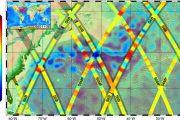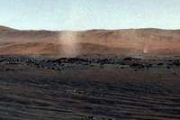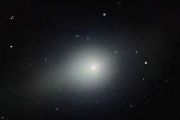
Copernical Team
NASA websites no longer promote 'first woman' on the moon for Artemis
This request seems a bit unusual, so we need to confirm that you're human. Please press and hold the button until it turns completely green. Thank you for your cooperation!
Press and hold the button
If you believe this is an error, please contact our support team.
185.132.36.159 : 54d83767-aaf5-4ffc-b147-e5d0e33b
SpaceX targets end of month for private astronaut polar orbit mission Fram2
This request seems a bit unusual, so we need to confirm that you're human. Please press and hold the button until it turns completely green. Thank you for your cooperation!
Press and hold the button
If you believe this is an error, please contact our support team.
185.132.36.159 : 6b9847ca-2072-448a-b418-8adb7267
A European startup scrubs its attempt to launch an orbital rocket on its first test flight
This request seems a bit unusual, so we need to confirm that you're human. Please press and hold the button until it turns completely green. Thank you for your cooperation!
Press and hold the button
If you believe this is an error, please contact our support team.
185.132.36.159 : 77544e25-be65-4acf-a970-3c15b96b
Scalable nanotechnology-based lightsails developed for next-generation space exploration
This request seems a bit unusual, so we need to confirm that you're human. Please press and hold the button until it turns completely green. Thank you for your cooperation!
Press and hold the button
If you believe this is an error, please contact our support team.
185.132.36.159 : bed28a96-06ae-4881-aeb2-4f2431bc
What rules actually prohibit us from building a warp drive?
This request seems a bit unusual, so we need to confirm that you're human. Please press and hold the button until it turns completely green. Thank you for your cooperation!
Press and hold the button
If you believe this is an error, please contact our support team.
185.132.36.159 : 4fd402fa-ee1e-45a7-96e8-e00cc878
Why can't physicists decide if warp drives are real?
This request seems a bit unusual, so we need to confirm that you're human. Please press and hold the button until it turns completely green. Thank you for your cooperation!
Press and hold the button
If you believe this is an error, please contact our support team.
185.132.36.159 : be2bf152-cf76-45e2-8a17-e57dbd66
SpaceX launches classified NROL-69 mission from Cape Canaveral
This request seems a bit unusual, so we need to confirm that you're human. Please press and hold the button until it turns completely green. Thank you for your cooperation!
Press and hold the button
If you believe this is an error, please contact our support team.
185.132.36.159 : b2b7bbd4-0bb9-4f01-8f40-77487a59
SpaceX rocket fuel makes stunning swirl in European sky
This request seems a bit unusual, so we need to confirm that you're human. Please press and hold the button until it turns completely green. Thank you for your cooperation!
Press and hold the button
If you believe this is an error, please contact our support team.
185.132.36.159 : 92397e0f-5e96-4b7c-958f-e1e3edc8
ESA’s Gaia finds a mysterious planet and brown dwarf
 Video:
00:01:40
Video:
00:01:40
Using data from the European Space Agency’s Gaia mission, scientists have found a huge exoplanet and a brown dwarf. This is the first time a planet has been uniquely discovered by Gaia’s ability to sense the gravitational tug or ‘wobble’ the planet induces on a star. Both the planet and brown dwarf are orbiting low-mass stars, a scenario thought to be extremely rare.
Celebrating Solar Orbiter and the women behind the mission
 Image:
Celebrating Solar Orbiter and the women behind the mission
Image:
Celebrating Solar Orbiter and the women behind the mission 






























